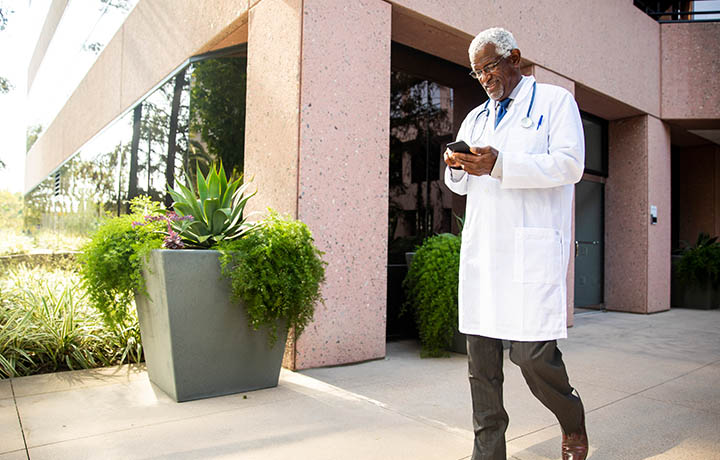Article
Clinicians & mobile health
- Education and awareness
- Remote data collection
- Remote monitoring
- Communication and training for healthcare workers
- Disease and epidemic outbreak tracking
- Diagnostic and treatment support
In the U.S., a majority of providers use mobile healthcare technology. In a 2014 HIMSS report, 83 percent of physicians said they used mobile healthcare to provide patient care.1 In another study, more than three out of four clinicians reported professional usage of smartphones. In 2014, 41 percent of clinicians qualified as “digital omnivores,” defined as those who utilized a tablet, smartphone, and computer routinely in a professional capacity, and 74 percent said they would be utilizing all three within the next year.2
Providers often use mobile healthcare tools to view or document patient information. In a recent survey, 69 percent of providers said they used a mobile device to view patient information and 36 percent used mobile healthcare technology to collect data in the exam room.3 EHR management was the top tablet-related task. But it is important to note that only one-third of clinicians in the survey had an EHR that was integrated with mobile healthcare tools.
Providers are increasingly likely to use mobile devices to read medical news and information, and search for information. For example, providers often use their smartphones and tablets to access professional clinical reference tools such as Epocrates. Mobile healthcare tools like these can help providers get the clinical intelligence they need, when they need it – including drug-drug interactions and clinical practice guidelines.
Providers also use mobile healthcare tools to coordinate care with colleagues. For example, with secure texting, providers can request and share clinical information on a patient, close the loop on referrals, schedule future care, and document care. Ideally, secure text messaging can “light up” a patient’s care team, instantly connecting the providers and staff involved in caring for a particular individual while protecting the privacy of the patient’s health information.
Finally, providers use healthcare technology such as secure email and texting to communicate directly with patients. This helps providers stay in touch with at-risk patients, such as those recovering from surgery or needing regular monitoring.
1 HIMSS Analytics. (February 2014) 3rd Annual HIMSS Analytics Mobile Survey. Available here.
2 2014 Epocrates Mobile Trends Report.
3 Aditi Pai. (Feb 26, 2014) Survey: 70 percent of clinicians use mobile devices to view patient information. MobiHealth News.
Available here.





